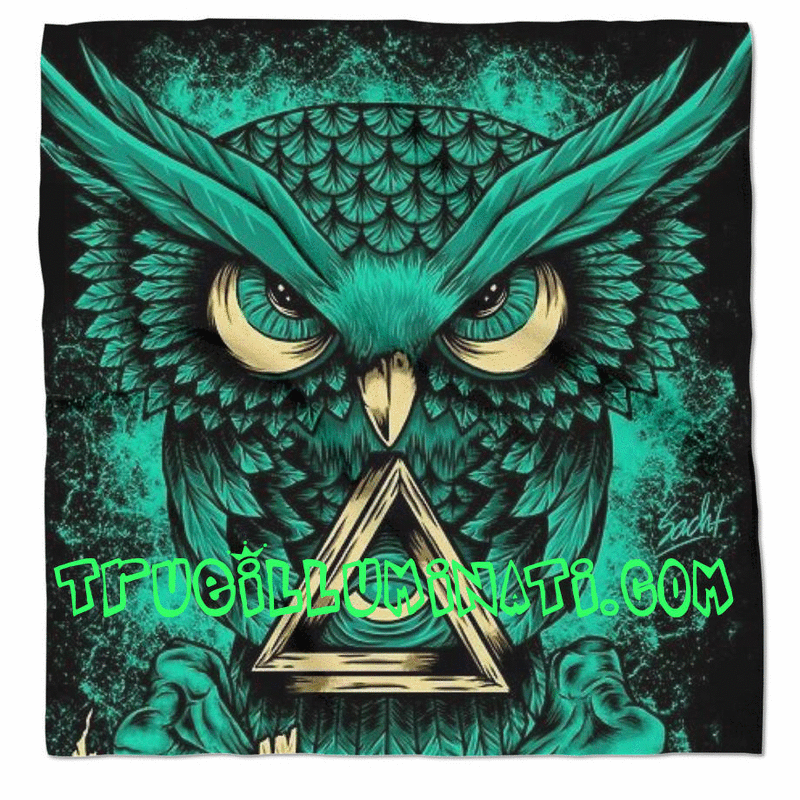The Star Ruby
The Ritual
- Facing East, in the centre, draw deep deep deep thy breath closing thy mouth with thy right forefinger prest against thy lower lip. Then dashing down the hand with a great sweep back and out, expelling forcibly thy breath, cry ΑΠΟ, ΠΑΝΤΟΣ ΚΑΚΟΔΑΙΜΟΝΟΣ[1]
- With the same forefinger touch thy forehead, and say ΣΟΙ[2],
thy member, and say Ο ΦΑΛΛΗ[3], [The secret sense of these words is to be sought in the numeration thereof.],
thy right shoulder, and say ΙΣΞΥΡΟΣ[4],
thy left shoulder, and say ΕΥΞΑΡΙΣΤΟΣ[5];
then clasp thine hands, locking the fingers, and cry ΙΑΩ[6]. - Advance to the East. Imagine strongly a Pentagram, aright, in thy forehead. Drawing the hands to the eyes, fling it forth, making the sign of Horus and roar ΘΕΡΙΟΝ[7]. Retire thine hand in the sign of Hoor-paar-Kraat.
- Go round to the North and repeat; but say NUIT.
- Go round to the West and repeat; but whisper BABALON.
- Go round to the South and repeat; but bellow HADIT.
- Completing the circle widdershins, retire to the centre and raise thy voice in the Paian, with these words, ΙΩ ΠΑΝ, with the signs of N.O.X..
- Extend the arms in the form of a Tau and say low but clear:
ΠΡΟ ΜΟΥ ΙΥΓΓΕΣ[8]
ΟΠΙΣΘΩ ΜΟΥ ΤΕΛΗΤΑΡΞΑΙ[9]
ΕΠΙ ΔΕΞΙΑ ΣΥΝΟΧΕΣ[10]
ΕΠΑΡΙΣΤΗΡΑ ΔΑΙΜΟΝΕΣ[11]
ΦΛΕΓΕΙ ΓΑΡ ΠΕΡΙ ΜΟΥ Ο ΑΣΤΗΡ ΤΩΝ ΠΕΝΤΕ[12]
ΚΑΙ ΕΝ ΤΗΙ ΣΤΗΛΗΙ 'Ο ΑΣΤΗΡ ΤΩΝ 'ΗΞ ΗΣΤΗΚΕ[13] - Repeat the Cross Qabalistic, as above, and end as thou didst begin.
Crowley's Notes
From The Book of Lies: 25 is the square of 5, and the Pentagram has the red colour of Geburah.
The chapter is a new and more elaborate version of the Banishing Ritual of the Pentagram.
It would be improper to comment further upon an official ritual of the A∴A∴
Soror Marfiza's Notes
Crowley's suggestion of impropriety to the contrary, a few more comments.
The Iunges, Teletarchai, Sunoches, and Daimones could be considered angelic beings of the Neo-Platonist magico-religious system; they are mentioned in the Chaldean Oracles (wrongly attributed to Zoroaster, who died a thousand years before the Oracles were written).
Iunges comes from the Greek word "Iunx," which is a type of bird called a "wryneck." According to the dictionary: "used as a charm to recover unfaithful lovers, being bound to a revolving wheel." rf. Xenophon and Theocritus." Another definition from that same entry: "Metaphorically, a spell, charm, passionate yearning for...cited generally, and in Aeschylus." Finally, "In plural, the name of certain 'Chaldaic' divinities."
Teletarchai comes from the Greek words telete, or "rite" (especially, of initiation into the mysteries), and archon/archai, which means "lord" or "leader". "An order of divine beings who bring initial and final terms into relation."
Sunocheis is the plural of "sunochos," which means "joined together." Metaphorically, it has the meaning of "agreeing with" or "suiting." It also has the meaning of "a narrow passage in the road" which in the New Testament comes to mean "constraint, affliction, anguish."
Daimon is a deity or divine power; also one's personal destiny. Later, it came to mean the souls of the departed, which linked the gods and men.
Sabazius' Notes
Sabazius is Supreme and Holy King of O.T.O. USA. This information is from his "invisible basilica", in his notes about Liber XXV.
The term “Phallus” may be interpreted, in Crowley’s words, as the “immortal principle” of either a man or a woman. It is the Principle of Life, continuously renewing itself through the cycle of death and generation.
IAO is the Gnostic form of the Tetragrammaton, IHVH. The individual letters Iota, Alpha, and Omega represent the Essence, the Beginning, and the End, respectively. Thus, IAO is the equivalent of the Hebrew phrase, le-Olahm, Amen in the Lesser Ritual of the Pentagram. It is also a Divine Name of the sphere of Tiphareth, corresponding to the heart.
The name יהוה is composed of particles of the "being" verb היה, and should be taken as indicating "all that is, was, and shall ever be". לעלם represents a period of time: "to the ages", or "to eternity". Its stem word עלם can mean "time" or "space" or "the world", depending on context. --Ed.
Therion, Nuit, Babalon and Hadit are divine names from the Holy Books of Thelema. The Signs of Horus and of Hoor-paar-Kraat (Harpocrates) are shown in Figure 33A,B on page 606 of Magick: Liber ABA, Book Four, Parts I-IV by Aleister Crowley, Samuel Weiser 1994.
In classical terminology, a “paian” was a song of praise, especially to Apollo. In this case, the paian is to the Great God Pan, where PAN may be translated as “All.” Also, the five letters I.O.P.A.N. correspond to the five N.O.X. signs, which are shown in Figure 33L-P on page 607 of Magick.
The Iynges (singular “Iynx”), Synoches, Teletarches and Daemones are divine principles from the Second Order of the emanationist hierarchy of late Neoplatonism, based on the Chaldean Oracles of Zoroaster. Their position in the Neoplatonist hierarchy is intermediate between the “intelligible” world, or world of ideation, and the “sensible” world, or world of perception. Their functions are, respectively, as “initiators,” “maintainers,” “perfectors,” and “executors” of the Divine Creative Impulse which originates in the intelligible world and ultimately manifests in the sensible world. Further information on them may be found in the published editions of the Chaldean Oracles edited by W. Wynn Westcott and G.R.S. Mead, and in the works of Proclus, Damascius, Michael Psellus, George Gemistos Plethon, and other late Neoplatonist philosophers.
